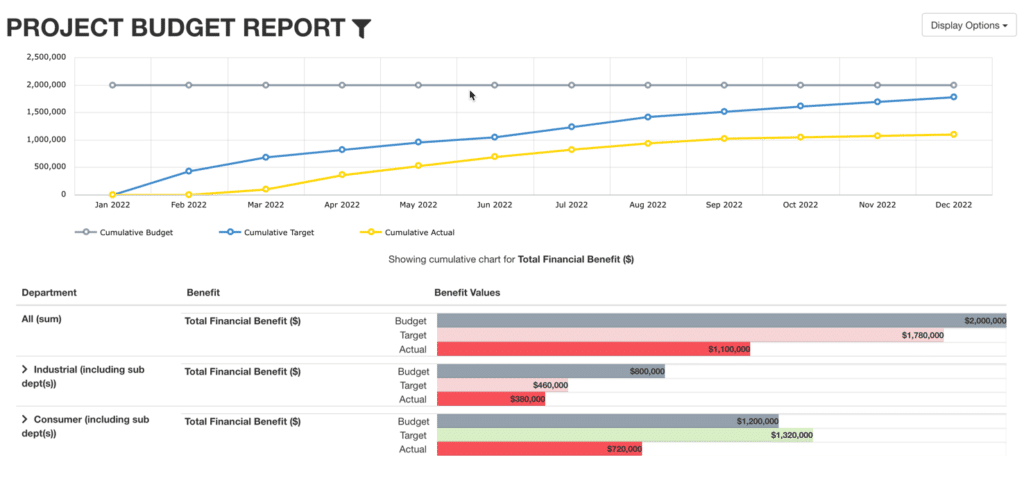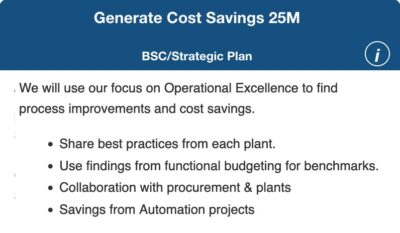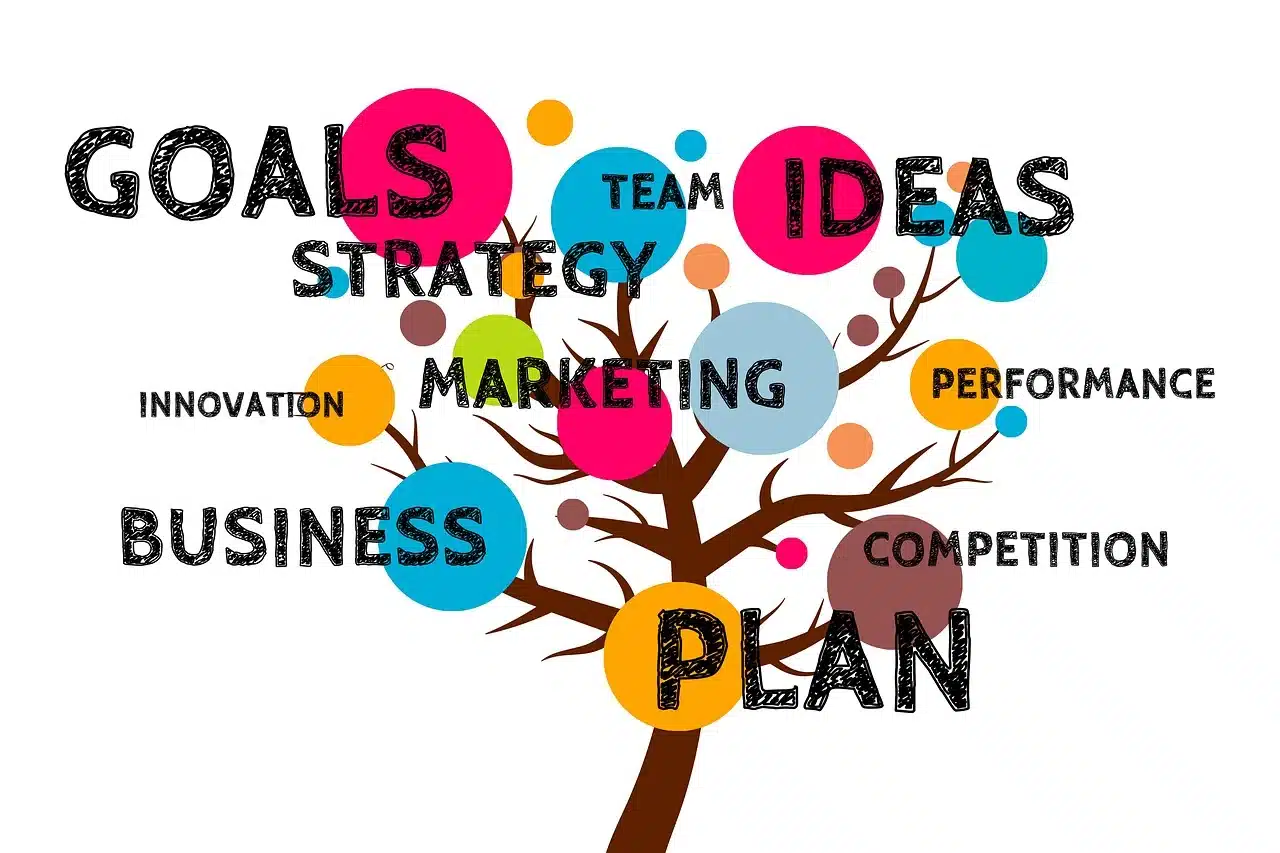Are your profits plateauing, productivity plummeting, and customer satisfaction sputtering? Luckily, there’s a cure for the common business blues, and it comes in eight forms. Join us as we delve into the eight essential types of business improvement objectives, unveiling strategies to supercharge your operations, reignite your brand, and leave the competition in awe.
1. Increase Revenue
Increasing revenue is one of the fundamental aspects of business improvement, and there are numerous strategies you can implement to achieve this goal.
Increase Total Number of Sales
More sales equals more revenue – the lifeblood of any thriving business. But how do we go from stagnant sales figures to cash registers ringing? Let’s dive into the following strategies to increase your sales.
- Unearth New Customer Goldmines
In line with increasing customers, you want to be sure to explore untapped markets, identify niche audiences, and venture into uncharted territories in order to increase the number of sales.
- Conduct market research
Attend industry events, and leverage social media to connect with new and potential customers. Remember, every new customer is a potential goldmine. Simultaneously, increase your market share.
- Refine Your Sales Funnel
Think of your sales funnel as a well-oiled machine. Optimize each stage, from lead generation to conversion, to ensure maximum flow. A smooth funnel is a profitable funnel. Be sure to use metrics that can be used to track the progress of your sales pipeline. KPI Fire provides a simple, visual way to link goals and projects to your metrics.
- Offer Incentives + Upsell & Cross-sell
Experiment with limited-time discounts, exclusive offers, and loyalty programs to incentivize purchases. Similarly, master the art of upselling and cross-selling existing or new products.
- Unleash the Power of Data
Knowledge is power. Leverage data analytics to inform revenue growth efforts by means of KPI management. With KPI Fire’s executive dashboards, it’s easy to use the right metrics to increase sales by tracking customer behavior, identifying sales trends, and personalizing your offerings. To increase sales and increase revenue, make data-driven decisions based on results.

Increase Demand
Let’s face it, every business owner dreams of seeing “sold out” signs and overflowing customer waitlists. But in the real world, increasing demand can feel like chasing a mirage. Fear not, for this section unveils the secrets to transforming tepid interest into a roaring customer stampede.
Add More Value + Expand Customer Base
This is arguably, the most potent type of business improvement – where you transform your offering from a dusty shelf-warmer into a magnet for customers. The more compelling features, benefits, and experiences you pack into your product or service, the more customer you can attract.
Let’s explore the following strategies to add more value for your customers:
- Improve quality or value for customers
Dive deep into your customer’s desires. What are their pain points? What hidden goals do your products address? Add more value for customers by crafting your value proposition around solving problems and fulfilling those goals.
- Polish your offering
Once you know what your customers crave, refine your offering. Enhance existing features, add surprises, and remove anything that doesn’t sparkle. Every little detail adds up to the overall perceived value.
- Unwrap the story
Don’t just sell a product, sell a story. Weave a narrative that connects your offering to your customer’s aspirations and emotions. Use powerful visuals, compelling copywriting, and even customer testimonials to paint a vivid picture of the value you deliver.
- Continuously Improve
Adding value for customers isn’t a one-time shot. It’s an ongoing process of innovation and improvement. Continuously seek feedback, adapt to changing needs, and experiment with new ways to enhance your offering.
Increase Average Price/Sale: Sell New Products
Are you seeking market share growth, revenue increase, cost reduction, or something else? This will guide the direction of your innovation efforts to develop new products.
- Develop new products or services that meet unmet needs or solve customer problems in novel ways.
- Improve existing offerings by enhancing features, functionality, or performance.
- Explore new technology integrations or service delivery models.
Increase Average Price/Sale: Sell More Existing Products
Increasing your average order value (AOV) by selling more existing products is a fantastic way to boost revenue without needing to invest in new products or marketing campaigns. Here are some strategies you can implement:
- Upselling and Cross-selling
- Offer Product Bundles and Kits
- Personalized Product Recommendations
- Highlight Product Scarcity and Exclusivity
- Effective Product Descriptions and Visuals
- Implement a Strong Loyalty Program
- Leverage the Power of Scarcity and Exclusivity
- Provide Exceptional Customer Service
2. Reduce Costs
Reduce Fixed Costs
Reducing fixed costs is a crucial strategy for businesses of all sizes to improve profitability and weather economic downturns. Here are some effective strategies you can implement:
1. Review and renegotiate contracts: Fixed expenses like rent, utilities, insurance, and software subscriptions often have room for negotiation. Gather data on current market rates and usage patterns, and aim for longer contracts with better rates, or explore alternative service providers.
2. Analyze and optimize office space: Do you need all the office space you currently have? Consider remote work options, shared workspaces, or hot desking. Optimize the layout of your remaining space for efficiency and collaboration.
3. Streamline administrative processes: Automate routine tasks like payroll, data entry, and expense reporting. Utilize cloud-based software solutions like KPI Fire to reduce paper usage, filing costs, and manual labor. Standardize procedures and eliminate redundancies to streamline workflows and improve efficiency.
4. Leverage technology: Many fixed costs can be replaced with technology-based solutions. For example, video conferencing can reduce travel expenses, cloud storage can eliminate physical server costs, and online training platforms can replace in-person training sessions.
With KPI Fire’s Project Workflow feature, managers can create detailed task-based workflows that include tasks, sub-tasks, statuses, assignments, priority levels, start/due dates, timesheets, files and notes.
Reducing Variable Cost (per unit sold)
Improve Gross Margins
Direct material cost reduction:
- Negotiate with suppliers: Renegotiate contracts to secure better pricing.
- Optimize material usage: Analyze material consumption in your production process and identify ways to minimize waste.
- Can you substitute some higher-cost materials with equally effective but cheaper alternatives without compromising quality?
- Reduce packaging costs: Analyze current packaging and explore cost-effective alternatives without sacrificing product protection. Consider simpler designs, recycled materials, or bulk packaging for larger orders.
Direct labor cost reduction:
- Improve labor efficiency: Analyze production processes and identify ways to streamline tasks, minimize repetitive work, and optimize workflows with KPI Fire’s workflow feature.
- Cross-training and multi-skilling: Train employees to handle multiple tasks, increasing flexibility and reducing the need for specialized personnel.
- Outsourcing specific tasks: Evaluate whether outsourcing certain labor-intensive tasks to specialized providers can be cost-effective.
Variable overhead cost reduction:
- Negotiate utility bills: Renegotiate contracts with utility providers for better rates, and implement energy-saving measures in your production and operating facilities.
- Optimize transportation costs: Evaluate your transportation routes and logistics to identify inefficiencies. Consider consolidating deliveries, optimizing vehicle routing, and negotiating better shipping rates.
- Minimize waste and rework: Implement quality control measures to reduce defects and rework costs. Streamline production processes to avoid errors and unnecessary waste generation.
- Leverage technology: Utilize KPI Fire to track and manage financial benefits.
Standout KPI Fire Feature: Tracking Project Benefits
To reduce costs, managers can review real-time updates on each team, business unit or project. KPI Fire dashboards include red, yellow and green charts that show which metrics are off target, so users can take action if needed.

Increasing productivity
Here are some productive strategies to further improve your gross margins.
Increase output per unit of time:
- Streamline work processes: Analyze your workflows and identify bottlenecks, inefficiencies, and redundancies. Optimize processes by eliminating repetitive tasks, automating workflows, and implementing lean manufacturing principles.
- Improve worker efficiency: Invest in training and development programs. Implement performance management systems and provide incentives to encourage productivity.
- Utilize technology and automation: Leverage technology such as automation tools, data analytics platforms, and strategy execution software to streamline tasks, reduce manual work, and optimize resource allocation.
- Optimize production scheduling: Implement efficient scheduling methods to minimize downtime, reduce setup times, and ensure smooth production flow.
Improve collaboration and communication:
- Employ continuous improvement program management: Encourage collaboration between departments and teams to share ideas, solve problems, and optimize processes. Implement effective communication channels and transparency measures.
- Invest in team building and leadership development: Empower teams through leadership development programs, fostering a positive and productive work environment.
Standout KPI Fire Feature
Idea Funnel – Managers can align employees ideas with company goals by prioritizing projects within the idea funnel. They can add metric categories, track ideas by month and monitor ideas by priority, impact and effort – as shown below:

Remember to:
- Continuously measure and track progress: Regularly monitor key performance indicators (KPIs) like output per hour, lead times, and utilization rates to track the effectiveness of your strategies and make adjustments as needed.
- Maintain quality: While increasing productivity, ensure quality standards are not compromised. Implement consistent quality control measures and provide adequate training to maintain product or service excellence.
Reduce Willingness to Sell for Vendors
Reducing costs while simultaneously increasing perceived value for both employees and vendors requires a strategic approach. Here are some strategies to consider:
- Negotiate effectively: Analyze contracts and identify areas for cost savings through renegotiation of terms, pricing, or volume discounts.
- Build supplier relationships: Foster mutually beneficial partnerships based on transparency and communication. Consider collaborative cost-reduction initiatives.
- Explore alternative sourcing: Research and compare competitive offers from potential new vendors while maintaining quality and reliability standards.
Increasing Employee/Vendor Perceived Value:
- Provide clear communication: Share cost-reduction goals with both employees and vendors and explain the value it brings to the company.
- Focus on efficiency improvements: Implement process changes and technology tools that benefit both parties, like automated purchase orders or vendor portals.
- Invest in employee and vendor training: Equip your team with Green Belt Training or Lean online training to instill negotiation skills and cost-awareness, while educating vendors on your procurement processes and expectations.
3. Improve Business Processes
Increase Productivity – Increase Capacity
Boosting productivity by increasing capacity requires a multi-pronged approach towards improving your business processes. Here are some strategies to consider:
Identify Bottlenecks and Inefficiencies
- Process Mapping: Visually map out your current workflows to identify bottlenecks, redundant steps, and areas for automation. KPI Fire has an excellent tool to help map your workflows with selective coloring to ease identification of areas for improvement.
- Data Analysis: Leverage data from your existing systems to pinpoint process variances, resource underutilization, and areas with high error rates.
- Employee Feedback: Engage your team in identifying pain points and opportunities for improvement within their daily tasks. The idea funnel is once again recommended in this regard.
Optimize Your Tools and Systems
- Technology Integration: Implement KPI software solutions that streamline tasks, automate workflows, and enhance collaboration.
- Standardization: Standardize procedures, templates, and reporting formats to ensure consistency. KPI Fire offers standardized built-in problem solving approaches such as DMAIC, PDCA, Kaizen, 8Ds. KPI Fire includes a library of these workflows to choose from.
Foster a Culture of Continuous Improvement
- Empower Employees: Encourage continuous process improvement suggestions and reward successful implementations.
- Performance Measurement: Establish KPIs to track progress and measure the impact of changes.
- Regular Reviews: Schedule regular reviews to assess the effectiveness of implemented improvements.
Learned Something? Apply Best Practices
Productivity can further be enhanced by incorporating what the team has learnt through previous cycles of business improvement projects and by doing the following:
- Streamline internal operations based on continuous improvement best practices that have worked in the past.
- Again, based on past experiences, identify actions not to repeat – or something to avoid.
- Consider potential future time savings. Implement automation, artificial intelligence, or other technologies to optimize workflows.
- Reimagine your supply chain or customer service processes based on what you have learned through previous improvement projects.

Improve Operations
- Improve Safety
Ensure adequate provision and proper use of safety equipment, and establish clear protocols for incident reporting and emergency response.
- Improve Delivery / Yield
Improve delivery / yield by optimizing your production or service delivery processes. Also, try to implement quality control measures. Improving your logistics and inventory management and refining your marketing and sales campaigns are further recommendations.
Improve Sales & Marketing
Improve Sales Conversion Rate
Some things you can do to improve your sales conversion rate on par with grounding your bigger business improvement plan include:
- Optimizing your website and landing pages: Improve design, clarity, and persuasive messaging to convert visitors into leads.
- Personalizing your marketing campaigns: Tailor content and offers based on individual lead demographics and interests.
- Nurturing leads with valuable content: Engage prospects with informative guides, webinars, and case studies to build trust and guide them towards purchase.
- Refining your sales process: Streamline steps, remove friction points, and prioritize high-value activities.
- Providing targeted sales training: Equip your reps with effective communication, objection handling, and closing techniques.
- Utilizing sales automation tools: Leverage technology to automate routine tasks, track progress, and gain data insights.
- Analyzing and iterating: Continuously monitor your sales data and metrics to identify areas for improvement and test new strategies.
Improve Finances
In this section, we share the best strategies for boosting business processes with finances in the spotlight.
Increase Stability:
- Utilize accurate forecasting tools to anticipate revenue and expenses.
- Conduct regular variance analysis to identify and address deviations from budget.
- Implement strict credit control policies and automate invoices for faster collection.
- Negotiate extended payment terms with suppliers.
- Explore inventory management strategies to reduce carrying costs.
Reduce Risks & Variation:
- Conduct cost-benefit analysis for all planned expenses.
- Implement procurement policies to negotiate better deals and optimize spending.
- Diversify your revenue streams to minimize dependence on a single income source.
- Secure appropriate insurance coverage to mitigate financial risks.
Cost Avoidance (Taxes, fines/legal, sustainability)
- Ensure accurate tax filing and identify potential opportunities for deductions, credits, or exemptions.
- KPI Software providers such as KPI Fire can provide you with the best performance indicators for demonstrating to tax authorities that your business is running well.
- Proactively manage your tax burden by anticipating future financial events and adjusting your operations accordingly. Be sure to use the cost-benefits feature in this regard.
- Utilization of tax-advantaged structures: Leverage legal entities or investments with favorable tax treatment.
- Resource efficiency initiatives: Implement systems to minimize water, energy, and material consumption, reducing operating costs and environmental impact.
- Waste reduction and recycling: Identify opportunities to divert waste from landfills and generate revenue through recycling or upcycling. Be sure to remain aware of the 8 wastes of lean in this regard.
- Green supply chain management: Partner with sustainable suppliers and optimize transportation routes to minimize carbon footprint.
Tutorial Videos
Conclusive Remarks
Increasing revenue, reducing costs, and improving business processes form the holy trinity of business improvement objectives. They represent a holistic approach to maximizing profitability and ensuring long-term sustainability. Ultimately, the success of any business hinges on its ability to excel in all three of these areas. By synergistically pursuing these objectives, businesses can not only increase bottom line profits but also build a foundation for sustainable growth and prosperity.




